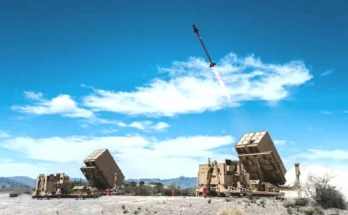
An estimated $7.2 billion will be spent over the next 10 years on the key programs covered in Forecast International’s Electronic Support Measures market analysis. During this period, a total of 6,826 ESM units will be produced. The top five manufacturers are BAE Systems, Raytheon Technologies, Lockheed Martin, Leonardo, and Northrop Grumman. Technology featured in this market includes such vital and ubiquitous electronics as radar and missile warning systems, situational awareness systems, and EW management systems as part of larger suites.
With its high demand as a vital sensor for the F-35 Joint Strike Fighter program, the ASQ-239 suite easily puts BAE Systems in the top five ESM manufacturer ranking and accounts for the majority of its $3.6 billion market value in this analysis. The next 10 years will see steady production of the system to match production rates of its primary platform.
Today, the combined requirement for U.S. and international JSF purchases is a tall order for the makers of the aircraft’s electronic systems, but BAE Systems is well placed to provide the ASQ-239 along with the substantial support that will be required.
Signaling another critical milestone, the program recently moved to a Block 4 upgrade phase. In April 2023, BAE Systems received $491 million in contracts from JSF prime contractor Lockheed Martin to produce these new variants. According to the BAE, Block 4 offers greater situational awareness, enhanced survivability, and increased capabilities to counter modern and evolving threats.
ESM systems production and support for major European aircraft programs will also be a significant factor in the market. The analysis period will see steady production of the EuroDASS Praetorian self-protection system to match the production of its primary platform, the Eurofighter Typhoon.
In April 2021, Leonardo, on behalf of the EuroDASS consortium, signed a contract to supply Praetorian for 38 of the latest-standard Eurofighter Typhoon aircraft being supplied to the Luftwaffe under the German Quadriga program.
A developing international jet fighter program may yield even more opportunities for ESM providers. In April 2023, the U.K. and Italy signed a collaboration agreement, the next formal step toward a permanent industrial construct for the Global Combat Air Program (GCAP), a partnership also involving Japan that seeks to bring a sixth-generation combat aircraft into service in the next decade.
As lead contractor for the all-important Next Generation Jammer (NGJ), Increment 1 (Mid-Band), which replaces ALQ-99 tactical jamming system pods on the EA-18G Growler aircraft, Raytheon maintains a unique edge as a manufacturer of EW technology. While the NGJ represents the cutting edge of newer technology, some the company’s major ESM systems, especially radar warning receivers, have been a notable part of the market for many years.
The next 10 years should also see steady production of Raytheon’s ALR-69 RWR, mostly for applications on U.S. military aircraft. In March 2018, the U.S. Air Force awarded a contract for the rapid procurement of 779 or more units for the USAF fleet of tactical air and widebody aircraft. These will likely include F-16, C-130, A-10, and MH-53 aircraft. Contract work should be completed in 2025.
The leading ESM systems covered in this analysis are produced by a variety of U.S. and European primes and subcontractors. As world militaries continue to purchase new tactical aircraft, naval vessels, and land vehicles while modernizing older platforms, they will continue to call on these companies to provide the latest technology to help protect these assets and the personnel who operate them.
 Source: Forecast International Platinum Forecast System.
Source: Forecast International Platinum Forecast System.
Forecast International’s eight Military Electronic Systems Market Intelligence Services cover the full range of defense-related systems and programs in the radar, communications, electro-optical, and electronic warfare markets, presenting a comprehensive market outlook for current equipment as well as new systems being developed as the modern battlefield moves toward a technology-based warfare approach with network-centric capabilities. For more information, click here.
Andrew Dardine is lead analyst for Forecast International's Defense Electronic Systems group. He is the primary author of Forecast International's Electronic Warfare Forecast and co-author of Electro-Optical Systems Forecast and C4I Forecast. Andrew is also a regular contributor to FI's Defense & Security Monitor blog, offering insights into developing technologies such as directed-energy and next-generation jamming systems. His analysis of such vital market areas as EO/IR systems and electronic countermeasures technology has been cited in Defense News, Aerospace Daily, and Bloomberg Businessweek, among other news media. He has also written about the electronic defense market for Aviation Week and the Journal of Electronic Defense.




